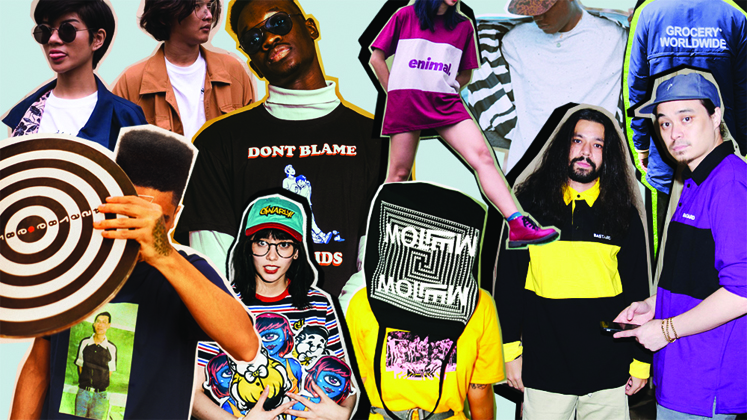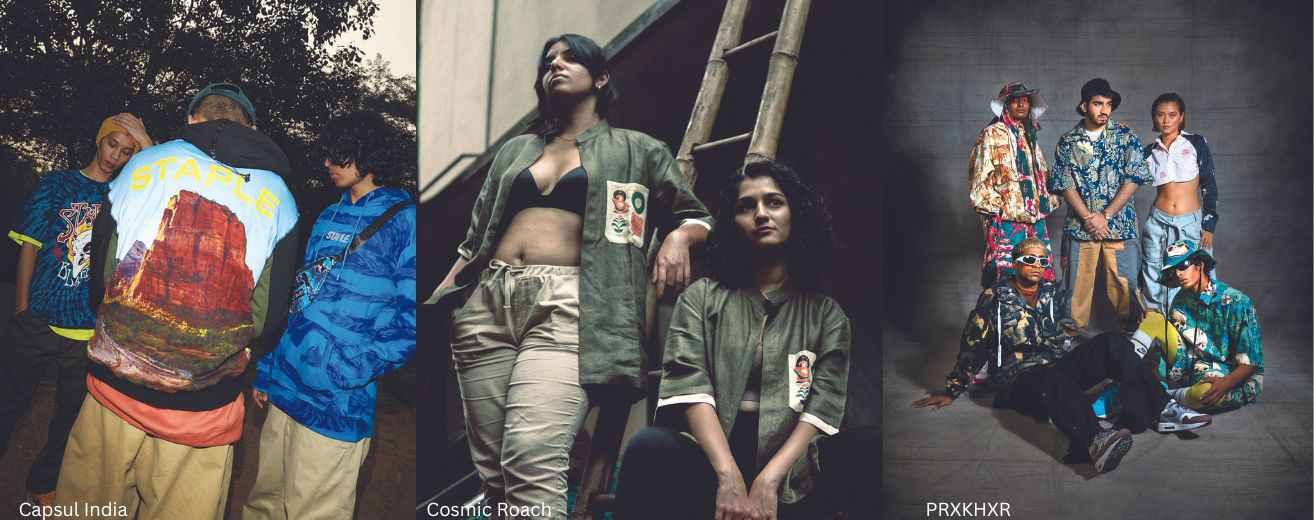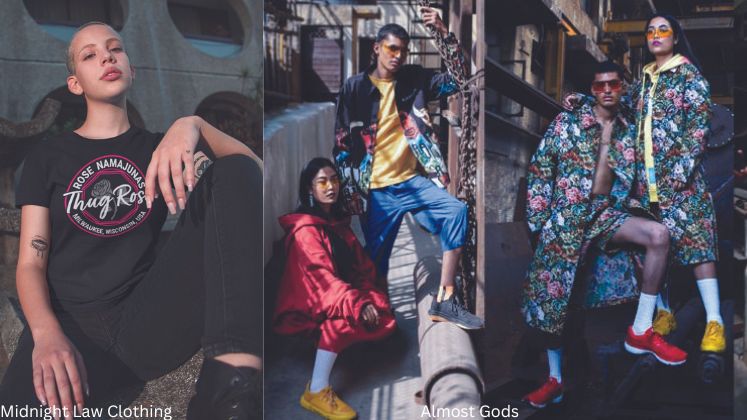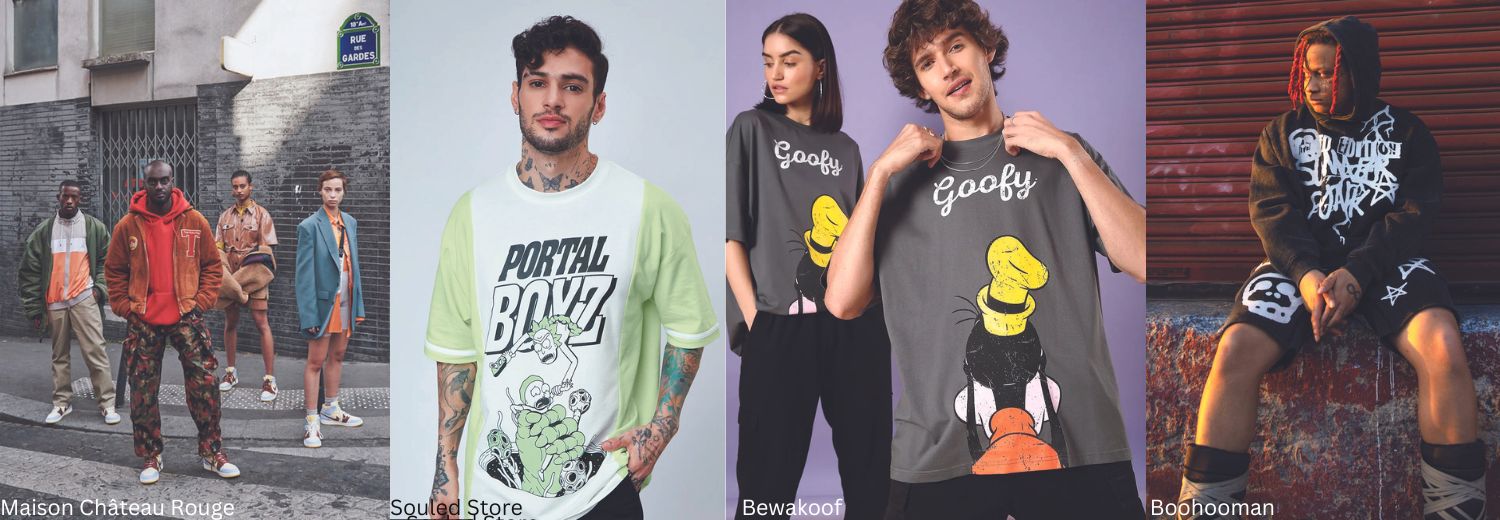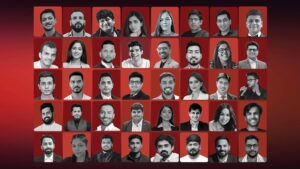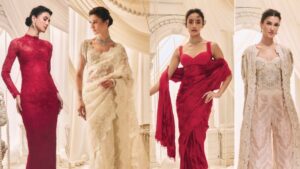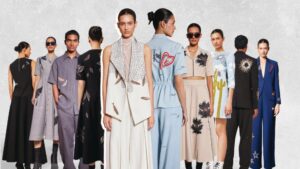Start-ups have always played an important role in thinking one step ahead and bringing fresh ideas to the table. In a world where gender stereotypes often dominate the fashion industry, it’s refreshing to see emerging start-ups challenging traditional norms with gender-neutral streetwear.
According to PWC, global streetwear is worth about US $ 185 billion, which is roughly 9 per cent of the global apparel and footwear market. Additionally, Deloitte‘s study reveals that India’s 390 million millennials and 440 million Gen Z cohort make up a significant portion of the streetwear consumer base in the country’s overall Rs 5.3 lakh crore apparel market.
Tapping this surging opportunity, fashion start-ups are disrupting the industry by bringing gender-neutral streetwear to the forefront. With a focus on inclusivity and individuality, start-ups across the globe are offering a piece of comfort for everyone. Gender-neutral streetwear is gaining popularity due to growing acceptance of gender fluidity, comfort and practicality, inclusivity and empowering message of defying traditional gender roles. It’s a statement of self-expression for all shapes, sizes and identities.
PwC states Streetwear segment is worth $ 185 B globally and Deloitte India reports India’s millennials and Gen Z drive trend.
Global brands’ join the gender-neutral craze
Several gender-neutral streetwear start-ups are currently gaining popularity globally. One such brand is Wildfang, based in the United States, which offers fashionable and tomboyish clothing for women. Wildfang has collaborated with exclusive gender-fluid streetwear segments of Nordstrom and Obey in the past. Another notable brand is Off-White, an Italian fashion house founded by Virgil Abloh in 2012. Off-White offers a range of clothing including hoodies, T-shirts and sweatpants featuring the brand’s logo. Palace Skateboards, a London-based skateboarding lifestyle brand, offers graphic tees, hoodies and beanies. Heron Preston, a New York-based brand, offers cargo pants, denim jackets and statement pieces with their logo. Fear of God, founded by Jerry Lorenzo in 2013, also offers gender-neutral streetwear as well as collaborative collections. Lastly, Kith, founded by Ronnie Fieg in 2011, offers a variety of clothing items such as hoodies, T-shirts, jeans, and tracksuits featuring the brand’s logo.
India is on a winning spree with rapidly mushrooming streetwear brands
India with its multiple options of designs and ideas on offer has seen several domestic brands creating a name for themselves in the streetwear market. Brands such as Almost God, Jaywalking, Midnight LAW, Six5Six Feet, Bhaane, Smokwear, Delhiwear, Ozo Apparel, Strey, HUEMN and many more are changing the wardrobe of the Indian youth.
In conversation with Apparel Resources (AR), Vikas Reddy, Owner of Midnight LAW India, asserts, “In recent years, we have seen a growing number of fashion start-ups embracing inclusivity and diversity by offering gender-neutral streetwear collections. This is a refreshing change from the traditional, gendered approach to fashion which is often exclusive and alienating. This type of fashion in gender-neutral streetwear space is empowering for everyone, regardless of their gender identity or expression.”
There are a number of reasons for the increased popularity of gender-neutral streetwear in the country. First, there is a growing awareness and acceptance of gender fluidity and non-binary identities. Second, gender-neutral streetwear is often more comfortable and practical than traditional women’s or men’s clothing. It is not designed to fit a specific body type or flatter a certain figure, which makes it ideal for people of all shapes and sizes.
Thirdly, gender-neutral streetwear brands are typically more inclusive and diverse than mainstream fashion labels and cater to a wide range of people, including those who identify as LGBTQIA+, disabled, or obese. This inclusivity is one of the main reasons why people are drawn to these brands. Fourth, gender-neutral streetwear sends a powerful message of equality and empowerment. Wearing clothes that defy traditional gender roles can be a way to express yourself and make a statement about who you are and what you believe in.
The young crowd in India is ready to experiment with funky clothing and streetwear with its bold and stylish designs has become a popular choice. Local artisans and their designs are also appreciated by streetwear brands and designers, making tribal and Bohemian styles a popular addition to the wardrobe.
Dhruv Khurana who owns Almost God, an Indian luxury brand which is visually appealing and has a great design language captivating consumers for long, believes, “It is important to view it as a larger industry or movement. This means recognising that there are multiple brands and artists involved, each with their own audience and that the growth of the market depends on the collective effort of all these stakeholders. Additionally, the drivers of growth would likely include factors such as the quality and popularity of the art being produced, the ability of artists and brands to reach and engage with audience across different languages and cultures, the development of strong fan communities and the fostering of healthy competition within the market.”
Vikas of Midnight LAW India also added, “In my opinion, the key drivers for growth are certainly social media, online shopping, ease of setting up an online business (through platforms like Shopify), user-friendly digital marketing and influencers. These factors have created opportunities for more awareness, more venture capital investment in the space and increased legitimacy for online shopping, which grows consumer confidence.”
Strategies to stay afloat in the competition
To gain visibility in the Indian market, streetwear brands collaborate with popular Indian influencers to create buzz around the brand, potentially turning their followers into customers. Building a physical presence through hosting pop-up shops and events in major Indian cities also helps to build brand awareness and generate excitement around the brand. Limited edition collections are another strategy used to create a sense of exclusivity and scarcity that resonates with Indian consumers, driving up demand and sale. Moreover, forming partnerships with other businesses is viewed as an effective way to promote products and reach new customers.
Bhavisha Dave of Capsul India, that has 28 brands under its umbrella and launched its store in Bengaluru, clearly defines streetwear as the most loved segment of youth for now and future. She avers, “Streetwear is a genre that is gradually finding stable growth in the Indian fashion market. People are turning experimental regarding their sense of style and dressing and streetwear gives them the liberty to try innovations in their regular dressing style. Since streetwear is no longer considered ‘underground’, all brands have the strategy to provide a unique piece of print to the consumer along with size-exclusive product offerings.”
Well-established apparel brands are also enjoying streetwear segment
The fashion industry has seen a surge in the popularity of streetwear, and the integration of sneakers and apparel has played a significant role in this trend. Superkicks, a premium sneaker brand, recently launched an apparel collection that balances both sneaker and apparel culture. Similarly, British streetwear brand Represent expanded its product category by launching sneakers. The Indian market has also seen an increase in streetwear culture.
“We are thrilled to be BoohooMan’s destination of choice as they strengthen the culture of streetwear in India by introducing an array of uber-stylish options. BoohooMan is poised to disrupt the Indian market that is rife with opportunities,” added Jayanti Ganguly, Business Head of International Brands, Marketplace and Omnichannel.
Additionally, Budweiser partnered with Myntra to launch the Budweiser Streetwear Co collection, and Bewakoof.com and The Souled Store also launched the collection seedha gali se which includes a size-inclusive, gender-neutral range of hyper prints, colour blocks, bottomwear and more in the main category respectively. Both have 100-250+ SKUs to cater to the rising demand.

